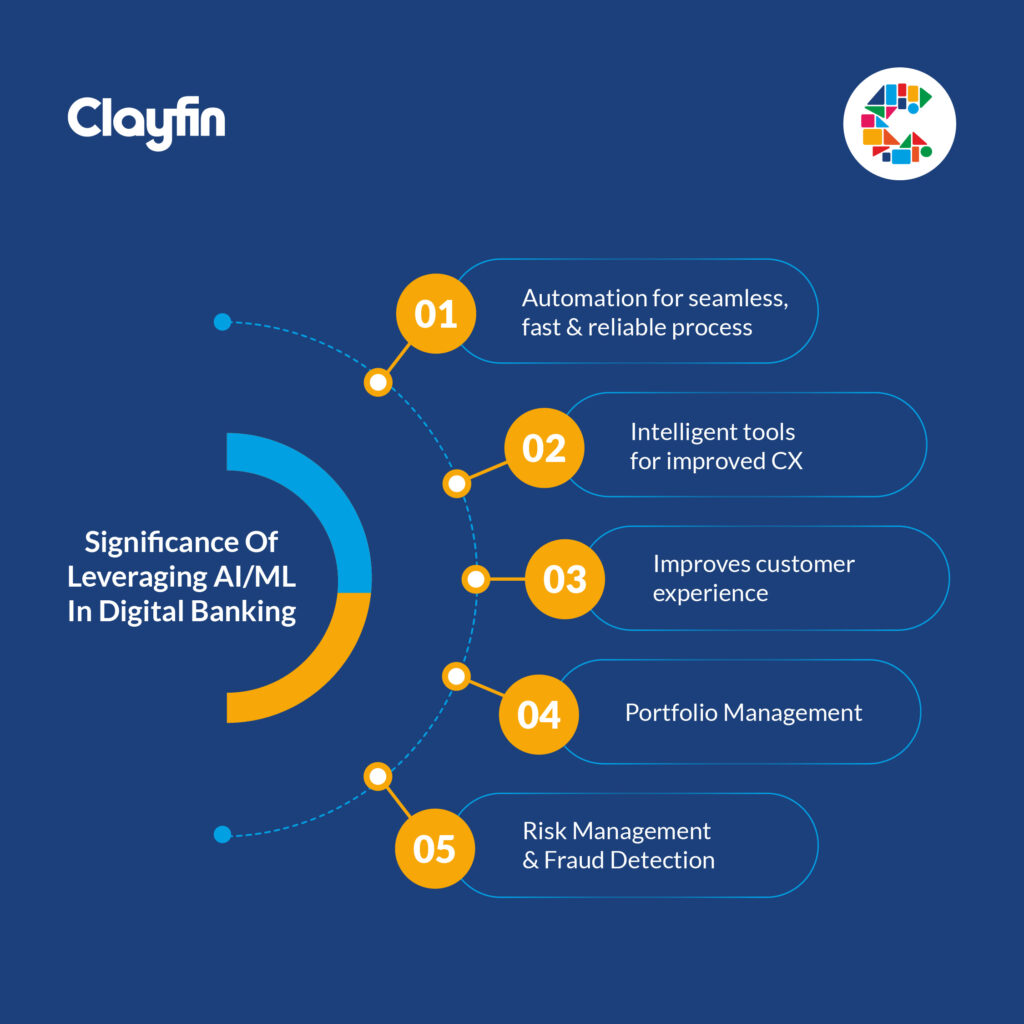Digital Banking & The Wave Of ‘All Things Customer’
Evolving technology means growing demands from customers. They begin expecting tools that are intuitive, seamless, and fast. Incidentally, these tools help banks advance by hitting their ideal customer engagement target. According to a report published by the Financial Brand, customers expect somewhat of a ‘GPS of financial services’. They look for services that can help them navigate their finances and reach their financial goals as efficiently as possible.
By leveraging digital banking engagement tools that use data, analytics, and real-time communication at scale, banks can meet increasing expectations simply by evolving.
Benefits & Use Cases of AI/ML In Digital Banking
Automation that enables seamless, fast, and reliable process
Using Artificial Intelligence, banks can accelerate automation and make their process seamless. One of the best applications of AI in the financial and banking sectors is automation. The scope for AI in the financial industry is tremendous. Banks can simplify and automate every operation previously carried out by humans using AI software. Legacy systems that take up extra room and increase cost, onboarding process that is tedious and time consuming are two common instances where automation wins.
One such UK digital bank, NatWest, collaborated with Tink, a Swedish open platform company, which was used to help develop an actionable newsfeed on their mobile app. They garnered 1.3 million answers in its first two months.
Intelligent tools used for improved customer experience
Chatbots and virtual assistants are tools that have been gaining popularity in recent years. Many banks have already introduced chatbots in their mobile applications due to the advantages it offers with his personalisation feature. AI chatbots in the banking sector can serve clients around the clock and provide precise answers to their questions. It is convenient, time-saving, fast, and reliable due to the degree of personalisation it has for a bot.
Canada’s CIBC bank’s implementation is yet another example of leveraging data to offer an omnichannel experience to power its customer acquisition. They pushed targeted mobile promotions to customers and synchronised data to create models that can update product pages quickly and at scale by using a modular, data-driven approach that enables them to use existing behavioural data to target messages and reuse, and recombine content to fit specific profiles in real-time.
Improves customer engagement
AI banking apps can do wonders. Implementing AI and Machine Learning in banking can help them understand what customers are looking for and offer it to them. One positive aspect of integrating AI/ML is that with its assistance, banks can now be there for their customers even on bank holidays.
AI for portfolio management
Artificial intelligence can be used more effectively for personal financial, wealth, and portfolio management. In addition, The management system for debit and credit cards also dramatically benefits from AI. The handling of credit and debit cards can be automated, which improves security. Artificial intelligence in banking streamlines the card authentication procedure and ensures the safety of all transactions. AI systems, therefore, boost mobile financial services.
AI for risk management and fraud detection
Banking apps with artificial intelligence can reduce fraudulent activities by identifying risks. It is also best suited for risk management. Risk-related activities include verifying documents, approving loans, and assessing financial status. AI and machine learning in banking can handle these with greater accuracy and privacy.

